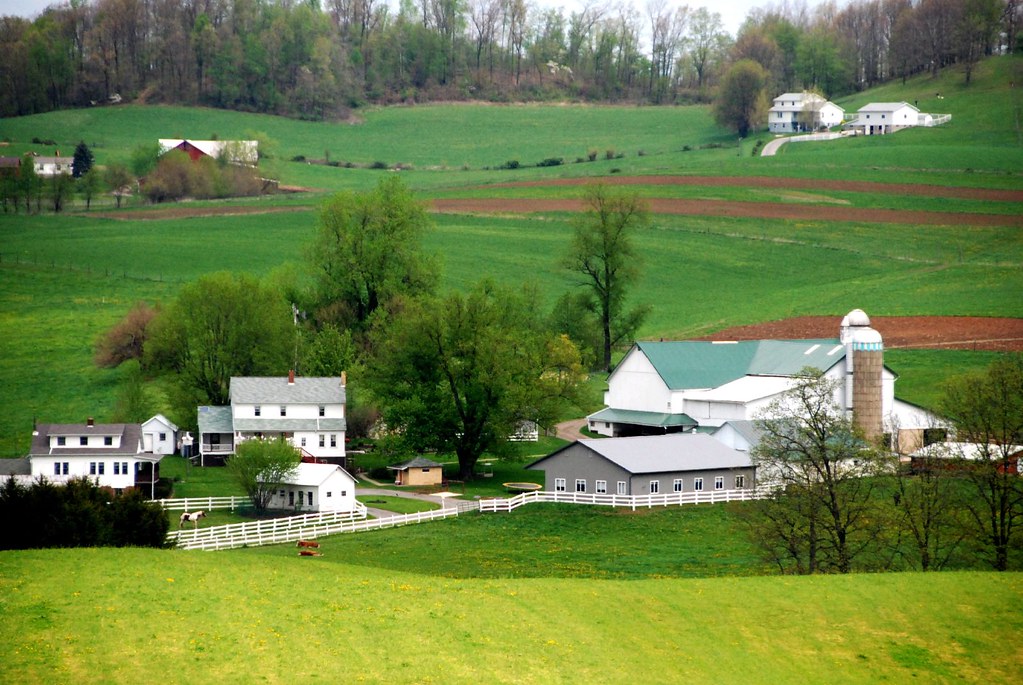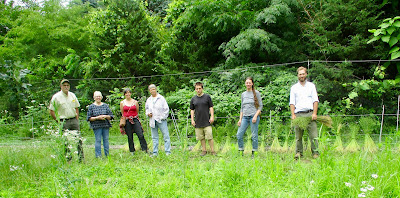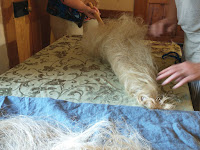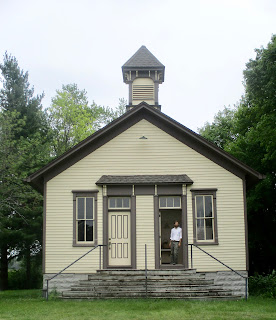Sheep! - The Wisconsin Sheep and Wool Festival
Lily and Snuggles
These are my people, This is my tribe.
At last, after a two year wait, The Wisconsin Sheep and Wool Festival was able to resume this year. This event is the highlight of my year. This post will give you a tiny window into this event where I am able to fully be the person that almost nobody sees - the person who is a spinner, a wool judge, a teacher, and a member of a unique community that meets once a year for a weekend in which we share our collective addiction to all things fiber and sheepish.
I've had a long-standing interest in European pre-industrial life skills, particularly in what the common people ate and, in particular, how they clothed themselves before modern, industrial cloth production. The seed of this interest was planted by my high school English and European History teacher, and I blame him for my nearly life-long obsession with fiber. What I wanted to know - what I still want to know - is how people made decent, sometimes luxurious, clothing for themselves without the use of machinery.
In order to begin to find the answer to my question, I had to learn how to spin wool. I was in my mid-twenties when I started to learn from a woman named Hope Parschell who lived in the California desert. Hope cooked on a wood cookstove and had bags of wool tucked everywhere throughout her house. Her entire existence was magical, and I wanted some of that magic for myself. And that's where it began.

Over the years, I've learned how to spin well, and I've won my share of First Place and Best of Show ribbons. It was a natural progression, therefore, that eventually I should learn about shearing sheep, what to do with a fleece once it's off the sheep, and how to prepare the fiber to make it possible to spin it into yarn. And somewhere along the way, I had to have a small, spinner's flock of my own sheep, because that's just what one does, you know. While I was shearing sheep and processing fleeces and talking to fiber folks, I learned about the different breeds of sheep that produce wool and what makes a good fleece or a poor one.
Which brings us to my arrival in Wisconsin on Labor Day 2004, spinning wheels in tow. Only a week after my arrival, a friend of mine took me to the Wisconsin Sheep and Wool Festival. I do not exaggerate when I say that it was a life-changing event. There were sheep everywhere, and people who knew about sheep and wool, and people who were spinners, and people who were weavers and knitters, and people who knew all kinds of things, and people who loved these people who loved sheep and wool. This was a complete departure from my experience in California. There, people's eyes would glaze over rapidly or they would listen with a baffled expression when I began to wax lyrical over sheep and wool. Suddenly, here in Wisconsin, I was no longer an oddball. These were my people. I had found my tribe at last.
In February of the following year, I was part of a shearing team at a local farm. My mentor, Mary Wallace, and I skirted* 130 fleeces that day standing on a hard-packed dirt floor in an unheated barn while the freezing wind raged just a few feet away outside. I came very close to frostbite that day, but I was introduced to the people who would become my fiber family. They asked if I would like to volunteer to help at the fleece show at The Wisconsin Sheep and Wool Festival that September, and being under the influence of endorphins caused by freezing feet, I agreed. It was one of the best decisions I have ever made.
That September, I arrived at the festival grounds and met Mary at the barn that held the fleece show. There were rows and rows and rows of fleeces in bags stretching halfway down the barn. I had never seen anything like it. It was dizzying. It may sound odd, but to sheep people, the smell of a barn full of fleece is incredibly comforting. And before you sneer, sheep don't smell bad like goats. They smell, well, warm.
Tables of fleeces stretching down the length of the fleece show barn. Each bag contains a fleece from one sheep.
I can no longer remember exactly what I did that day, but I was hooked. Over the next few years, I learned to judge fleeces and eventually became the Coordinator of the fleece show, a teacher, and a fleece judge in my own right. The fleece barn is my home and my domain for three full days. I love it.
The late Neal Ketner, who taught me how to judge fleeces and was an all around wonderful person
But the fleece show is only part of the festival. There are two barns full of vendors selling every imaginable sheep or fiber-related product, including delicious sheep cheese and soap made with sheep milk. I often find myself a little breathless after touring the vendor barns - there's just so much to see and touch and eat and talk about. Since I am instantly recognizable in my Victorian wear, friends and folks who have seen me judge fleeces or teach will stop to have a chat, and we catch up on news.
The festival offers classes on all kinds of subjects that involve fiber: spinning, knitting, weaving, dyeing, felting, and basket making. While basket making isn't technically working with fiber, the students create a basket for storing wool, so I suppose that's the connection, plus it's wildly popular.
Yarn made from a rainbow of fibers by one of the students in my class There is a fashion show and there are demonstrations of all kinds, including, of course, sheep shearing. And there are competitions of all kinds including our own fleece show.
Best in Show Winner, Jolyn Meehan, with fleece show judge Letty Klein. Jolyn won Best in Show out of a field of 160 fleeces! There are, of course, competitions for sheep breeders. These look exactly like dog shows, with all the primping and pampering one would expect, except the competitors say "baaaaah" instead of "woof".

One of the events which attracts a large number of observers is the Sheep to Shawl competition. This is basically an insane fiber relay race. Adults who probably should be examined by psychiatric professionals are given a bunch of fleece and they have to prepare it, spin it, and weave it into a shawl in about four hours. These people are serious competitors with uniforms that can be (ahem) rather unique. They practice for months prior to the competition with each team member taking on a specific part of the process. Kind of like baseball but with wool. Sort of. It's the closest a spinner and weaver can get to an athletic competition, and the victorious team will take a winning lap throughout the barns, shawl held high, to great acclaim.
Two teams of Sheep to Shawl Competitors from other fiber festivals. Note the rather unique uniform on the team below.

When I need a break from working the fleece show, I try to take at least half an hour to watch the herding trials. I could watch them for hours. If you've seen the movie Babe, you may remember the dog named Fly. Dogs like Fly - border collies - are the most brilliant dogs ever, and they need a job to do. Each dog has to go out and fetch a bunch of irritable sheep and move them through a series of gates and pens at the shepherd's command (usually a series of whistles). The dogs race, run, crouch, stalk, lie down, and move the sheep this way and that to get them where the shepherd wants them to go. Sometimes the sheep have other ideas, though. At the end of the day, win or lose, it's clear that the dogs love their people, and for them, it's a good day's work done.
Tresa Laferty and Tele
And, of course, there are sheep. From early in the morning until long after the sun goes down, we are treated to a concert of "baaaahs", "maaaahs", "buuuurs", and "blaaaahs" from the sheep penned just outside the barn. There is a Hall of Breeds where people can look at sheep on the hoof that they might never see.
Dozing Soay sheep. These are a primitive, semi-domesticated breed. They seem quite relaxed, don't they?
Two Shetland sheep (left) and a Scottish Blackface (above).
A snuggle of Shropshire sheep. They've been sheared recently, so they look a bit naked, but they don't seem to mind.
A Shropshire lamb looking for trouble.
Buddy, the big Cormo ram. This guy was a love bug and wanted me to keep scratching his ears for hours.
A white Border Leicester with a Shropshire pen pal.
And what would a festival be without a party? There are any number of dinners and get togethers in the evenings. For some of us, it is the only time we will see each other until next year, so we make the most of it. In the fleece barn, we have a constant supply of chocolate on hand. My crew thinks it's there to keep me happy, but the truth is they eat most of it. On the other hand, the four of us who stay in the hotel together have wine and cheese to enjoy as well as other goodies we may have brought with us. Most of the time, it's good wine. This year, it was nearly undrinkable, but as exhaustion set in, it didn't really seem to matter.
On Sunday afternoon, after the fleece sale ends and we have balanced the sales, we linger just a little bit longer together, doing an extra spot check of the barn, sweeping the floor yet again, anything for an excuse to stay a bit longer The weather often changes during the course of the weekend, and on Friday when we all arrive, it may have been sunny and warm and feel like summer, but by the time we leave on Sunday, it may be much cooler.
 The festival is a ritual of the season. Fall is setting in. The shepherds will be breeding their ewes for lambing in spring, but the long, cold winter still lies ahead. We have fleeces to wash and yarn to spin, but the tribe is dispersing to their several homes, and we won't see each other for another year. Hair will turn grayer. Children will go off to college or get married. Lambs will be born and bought and sold.
The festival is a ritual of the season. Fall is setting in. The shepherds will be breeding their ewes for lambing in spring, but the long, cold winter still lies ahead. We have fleeces to wash and yarn to spin, but the tribe is dispersing to their several homes, and we won't see each other for another year. Hair will turn grayer. Children will go off to college or get married. Lambs will be born and bought and sold.
This cycle of gathering with other sheep folk has repeated itself as long as people have been raising sheep - thousands of years. I can sense the echoes of those gatherings of long ago when I talk with a shepherd about their flock or admire another spinner's yarn. It feels timeless. We have put our selves into this process, well beyond the reach of mass production of sheep and wool. Technology will come and go, but the process of raising a sheep and hand spinning its wool into yarn has staying power. We are in the process of rediscovering what was commonplace to our ancestors and nearly lost: how to feed and clothe ourselves well and comfortably from the animals we raise on our own farms or those nearby. And I still don't know how they did it, but I'm going to keep trying.
*Skirting is the process of removing the undesirable parts of a fleece so that only the good wool remains. It can be a messy, smelly job.



































































